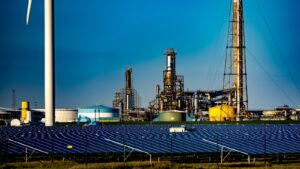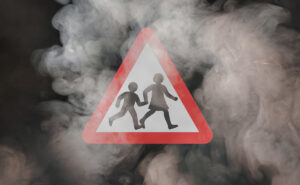A team from Dartmouth College has studied the impact of air pollution on the atmosphere in the arctic, finding that change could be seen from the very start of the industrial age.
Regular AQN readers will already be well-versed in the ways of phytoplankton, featuring as they did in last week’s story about Saharan dust. This weeks’s story however, takes us to the Arctic and involves a byproduct of phytoplankton activity: methanesulphonic acid (MSA).
Phytoplankton are very much the canary in the coalmine when it comes to determining the Ocean’s health and for years, scientists have linked the levels of MSA in the atmosphere with phytoplankton activity. A fall in levels indicating that all is not well in our seas.
However, researchers in the lab of Erich Osterberg, an associate professor of earth sciences at Dartmouth, have found another reason that MSA levels might fall – air pollution.
The team studied a 700ft ice core, taken from Denali National Park in Alaska, which holds around a thousand years of climate data. They realised that for hundreds of years, the levels of MSA in the ice fluctuated slightly, until the mid-20th century when, in the words of Erich Osterberg: ‘it falls off a table.
A 2019 study had already identified this decline in MSA, but took it as an indicator of a decline in the phytoplankton population. Jacob Chalif, first author of the study and a graduate student in Osterberg’s lab, however, wondered if this could be caused by pollution preventing the creation of MSA in the first place.
Chalif looked at the effect that nitrates – often formed through burning fossil fuels – might have on MSA levels and found that: ‘Pretty much to the year, when MSA declines at Denali, nitrate skyrockets. A very similar thing happened in Greenland. At Denali, MSA is relatively flat for 500 years, no notable trend. Then in 1962 it plummets. Nitrate was similar, but in the opposite direction—it’s basically flat for centuries then it spikes upward. When I saw that I had a eureka moment.’
As well as serving to rule out widespread marine ecosystem collapse, the research suggests that we might study MSA levels to measure pollution in the atmosphere, especially in regions with no obvious sources of emission.
Chalif,said: ‘Our study is a stark example of how air pollution can substantially alter atmospheric chemistry thousands of miles away. The pollution emitted in Asia or Europe was not contained there.
‘By releasing all this pollution into the world, we’re fundamentally altering atmospheric processes. The fact that these remote areas of the Arctic see these undeniable human imprints shows that there’s literally no corner of this planet we haven’t touched.’
Osterberg said: ‘Marine ecosystem collapse just wasn’t working as an explanation for these MSA declines, and these young scientists figured out what was really going on. For me, it’s a new way of understanding how pollution affects our atmosphere. The good news is that we are not seeing the collapse of marine ecosystems we thought we were. The bad news is that air pollution is causing this.’
On the positive side, MSA levels were seen to improve in the 1990s when industrialised countries began to regulate against nitrogen pollution. The fact that nitrogen oxides only exist in the atmosphere for a few days (as opposed to say, CO2 which hangs around for centuries) means the measures we have put in place to prevent their emission had an immediate effect.
Osterberg said: ‘These data show the power of regulations to reduce air pollution, that they can have an immediate effect once you turn off the spigot. I worry about younger people resigning to an environmental crisis because all we hear about is bad news. I think it’s important to acknowledge good news when we get it. Here, we see that regulations can work.’
Photo: Mike Waszkiewicz

















Leave a Reply